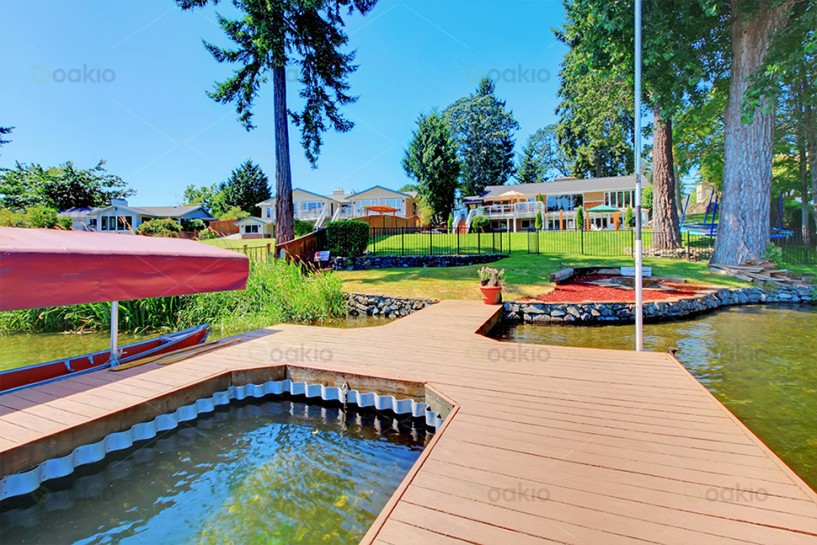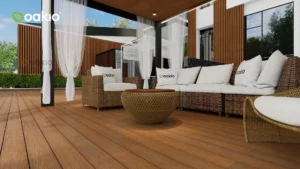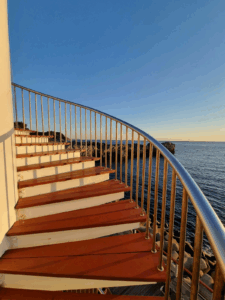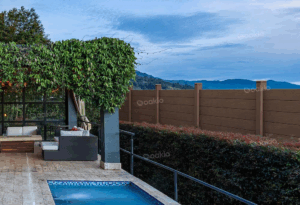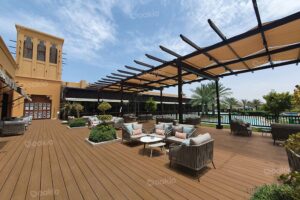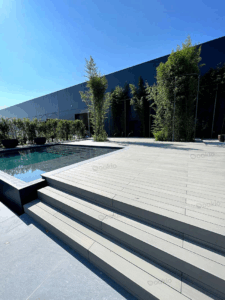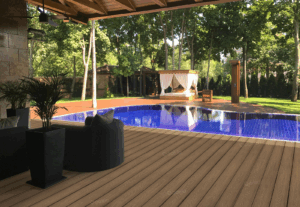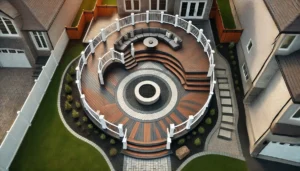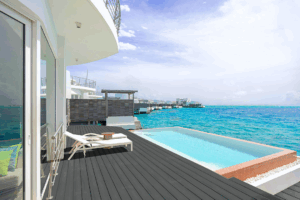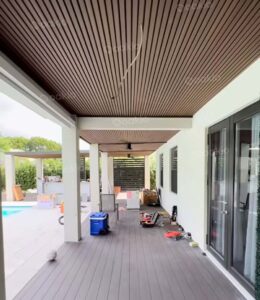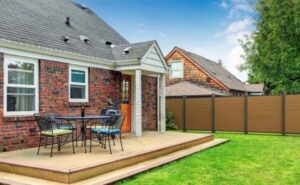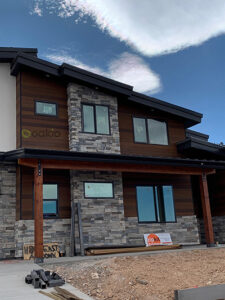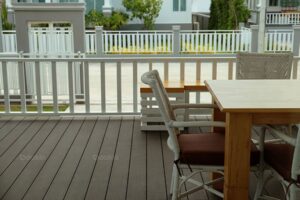Composite Decking Vs. Wood: Are the Differences still Stark in 2025?
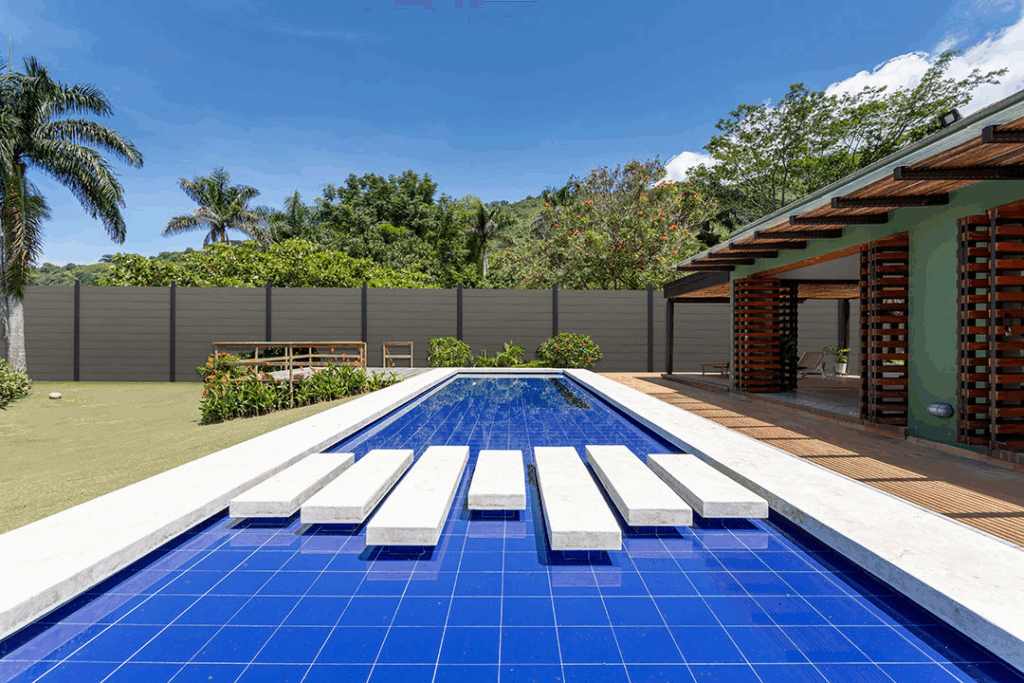
As outdoor living spaces gain in popularity, homeowners are increasingly exploring various non-traditional decking materials for their projects. Among these options, wood-plastic composite (WPC) has emerged as a leading choice.
WPC, also referred to as composite wood, is a blend of wood fibers and recycled plastics, resulting in a durable and eco-friendly product.
While traditional wood has been favored for its natural appearance, it often requires constant maintenance and may need frequent replacement. In contrast, composite decking excels in durability, requires less maintenance, and offers a variety of aesthetic options.
Recent advancements in manufacturing have addressed many of the previous concerns associated with composite wood decking materials. Understanding the benefits and differences between modern composite decking and traditional wood decking will assist you in making the right choice for your needs.
Understanding Composite Wood (WPC)
What is composite wood? They are created by infusing wooden fibers with thermoplastics, which bind the fibers together. This process produces a composite material that maintains the natural appearance of wood while offering enhanced durability and moisture resistance. As a result, WPCs are increasingly utilized in various applications, including decking, railing, and outdoor furniture.
Different manufacturers employ various types of plastic. Polypropylene (PP) is noted for its lightweight properties and ability to improve heat resistance. Polyethylene (PE) is the most commonly used plastic due to its affordability and flexibility. Polyvinyl Chloride (PVC) provides excellent strength, weather resistance, and fire resistance, making it suitable for extreme weather conditions.
Leading manufacturers offer a range of composite decking boards, including lightweight hollow boards, robust solid boards, and capped boards that feature an additional protective polymer layer.
Although WPCs are not biodegradable, their long service life and recyclability contribute to eco-friendliness. Moreover, many WPC manufacturers, such as Oakio, reduce their reliance on virgin materials by prioritizing the use of recycled plastics and wood fibers in production.
Comparison of Key Features
Durability and Longevity
Traditional wood decking requires significant maintenance. You need to remember to stain and seal the wood every two to three years to protect it from moisture and UV damage. Annual inspections are essential to identify signs of rot, pest infestations, and weak spots, as well as to address any cracks that need repair.
In contrast, WPC effectively addresses these issues with UV-resistant coatings that prevent fading and discoloration. Its plastic-wood blend allows it to resist rot, splintering, warping, and insect infestations.
Plus, many manufacturers provide warranties of 15 to 50 years, which serve as a testament to their composite wood’s reliability. These warranties offer peace of mind by guaranteeing that any defects will be replaced or refunded, especially when it comes to repairs and installation.
This means that replacements for composite boards are rare and infrequent, especially when compared to the generally shorter lifespan of traditional wood, which often requires more frequent replacements.
Maintenance Requirements
Wood requires regular seasonal maintenance, which includes cleaning, sanding, painting, and sealing, to preserve its natural beauty and protect against lasting damage. This maintenance can consume numerous weekends and hours, as well as incur additional costs for the necessary materials.
In contrast, composite decking requires very little maintenance. A gentle cleaning with mild soap from time to time is sufficient. There is no need for staining or sealing. For those looking for a low-maintenance and cost-effective solution, composite is an ideal choice.
Aesthetic Versatility
Wood adds an authentic and timeless character to any space. When allowed to weather naturally, it develops a soft, silvery patina that highlights its unique patterns. With appropriate maintenance, a wooden deck conveys a sense of heritage and legacy simply through its presence.
In contrast, wood plastic composite material captures the essence of wood at its best. Manufacturers provide a diverse range of colors and finishes that effectively mimic the natural variations found in wood. With realistic and intricate grain patterns, it replicates the appearance of wood in its prime. This material maintains a consistently fresh and natural look, free from the unpredictability of weathering and uneven aging.
Because it retains its appearance year after year, it is easier to find customization options, such as railings and fences, that allow you to seamlessly mix and match elements in your outdoor space according to your preferences.
Safety and Comfort
Modern composite decking offers numerous features that can enhance safety and comfort, especially for families with children and the elderly. The main advantage is their anti-slip surfaces, which provide improved traction and reduce the risk of slips and falls in wet conditions.
While older composite decking tended to retain heat, the latest boards are engineered with cool-to-touch technologies to reflect more sunlight and retain less heat even in direct exposure. Even though wood is a good insulator, when under direct sunlight for long periods of time, the surfaces can be unbearably hot.
Unlike traditional wood, composite boards are splinter-free. You don’t have to worry about injuries when they come into bare feet or skin since they won’t break off, making them well-suited for high-traffic areas.
Environmental Impact
Composite boards provide impressive sustainability {something}, making them an eco-friendly choice. It typically contains a significant amount of recycled content, reducing waste and demand for new materials. The production process has a reduced carbon footprint, utilizing renewable energy sources.
In contrast, traditional wood poses some considerable environmental drawbacks. Increased demand for wood threatens deforestation, destroying biodiversity and contributing to climate change. Furthermore, the chemical treatment required to preserve the look and durability of wood can harm surrounding ecosystems.
Choosing composite decking reflects a commitment to sustainable resources and ethical consumption. Its durability ensures fewer replacements, and its recyclability means continued use as a versatile and long-lasting material.
Installation and Cost Factors
Composite decking is known for being easy to install, making it a popular choice among DIY enthusiasts. Many composite products are designed to be user-friendly, with detailed guides easily available online, and a network of trusted installers can provide professional help if needed.
When it comes to cost, the initial price of composite materials may be higher than traditional wood, but it is often offset by a longer lifespan and lower maintenance expenses. Traditional wood usually requires frequent staining, sealing, and replacement, resulting in higher long-term costs.
Homeowners should consider the complexities of their planned designs. Composite decking can accommodate curves and various accessories. The typical price ranges for materials will depend on quality and features, so budget considerations are essential for making an informed choice.
Common Myths and Concerns about Composite Wood
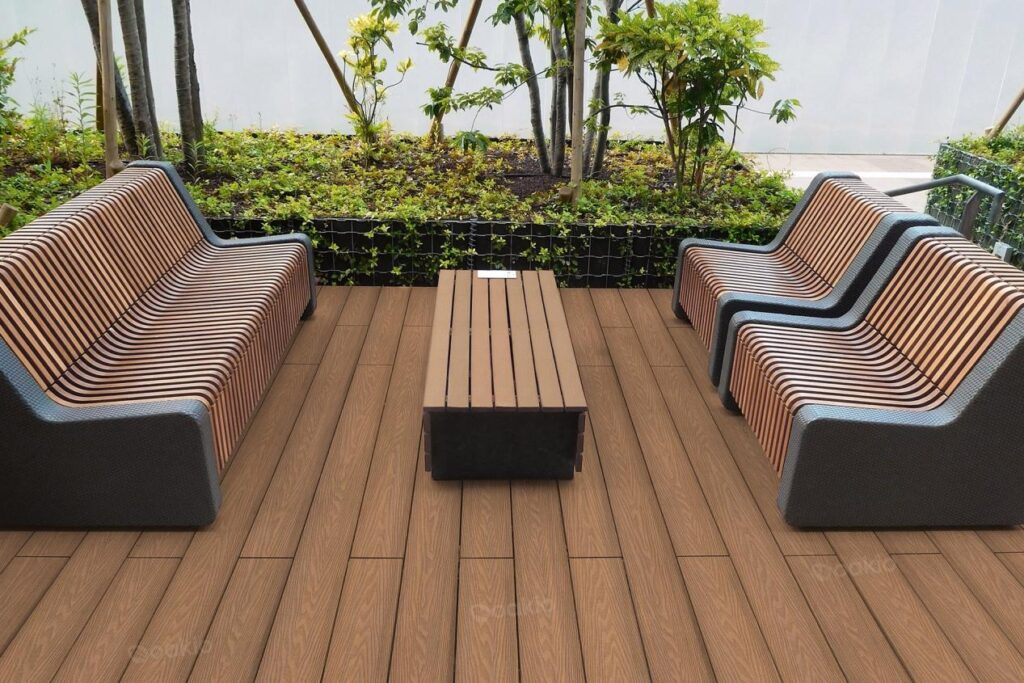
If someone has warned you that composite decks will overheat in the sun, that advice is no longer relevant. Today’s composite boards are engineered with heat-reflective technologies that reduce surface temperatures.
The plasticky appearance of older composite boards is a thing of the past. Modern boards use advanced manufacturing techniques to mimic the texture, grain, and color variation of real wood.
You might have heard that composite decking doesn’t match up to real wood when it comes to durability and longevity. However, that is not true. Many manufacturers back this claim with warranties that can last 25 years, and with proper care, composite decking can last far longer than that.
For the environmentally conscious, the use of plastics may sound like it would be difficult to dispose of or recycle. However, WPC manufacturers keep hundreds of millions of pounds of waste out of landfills every year by using recycled materials.
A 2024 report from the American Chemical Society highlighted that composite decking significantly reduces the carbon footprint of outdoor construction. It helps reduce deforestation and limits the need for harmful chemical treatments required for preserving wood.
Why Composite Wood is the Preferred Choice in 2025
Composite decking emerges as a sustainable and budget-friendly option for decking. Their main benefits include a notable decrease in maintenance requirements, extended durability, and an overall lower footprint on the environment.
Leading brands are consistently pushing the envelope to tackle the common challenges associated with traditional wood decking, particularly its vulnerability to moisture and decay.
There’s no need to hurry into a decision. You can explore and discover the wide variety of composite decking options at your fingertips by requesting free trial samples from reputable companies such as Oakio. Plus, they provide professional consultations to assist you in crafting the best plans for your project.
Conclusion
Homeowners who want a strong, beautiful, and eco-friendly deck should consider composite wood decking. Composite decking won’t rot, warp, or be eaten by insects, making it ideal for outdoor use. It’s cheaper and easier to maintain because it doesn’t need staining, sealing, or sanding. Composite boards made from recycled materials reduce waste and create a product that can last for decades.
The rich texture and color of composite decking can make it look like natural wood, and many brands offer a plethora of finishes to match any design. Composite decking’s versatility means it can be used to build anywhere from backyard retreats to large guest areas.
So before building your deck, consider your lifestyle, weather, and maintenance needs. Composite decking may cost more than regular wood, but its durability, low maintenance, and environmental friendliness make it a cost-effective investment in the long run.
Are you ready to consider your options? Oakio offers a wide selection of high-quality composite wood products, along with expert advice to facilitate your initial steps. Visit Oakio’s website to browse products and installation guides and start planning your dream outdoor space.
Trending Reading
What Are the Differences Between the WPC Board and PVC Board?
[2025 Update] How Long Does WPC Decking Last?
